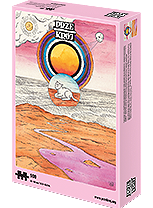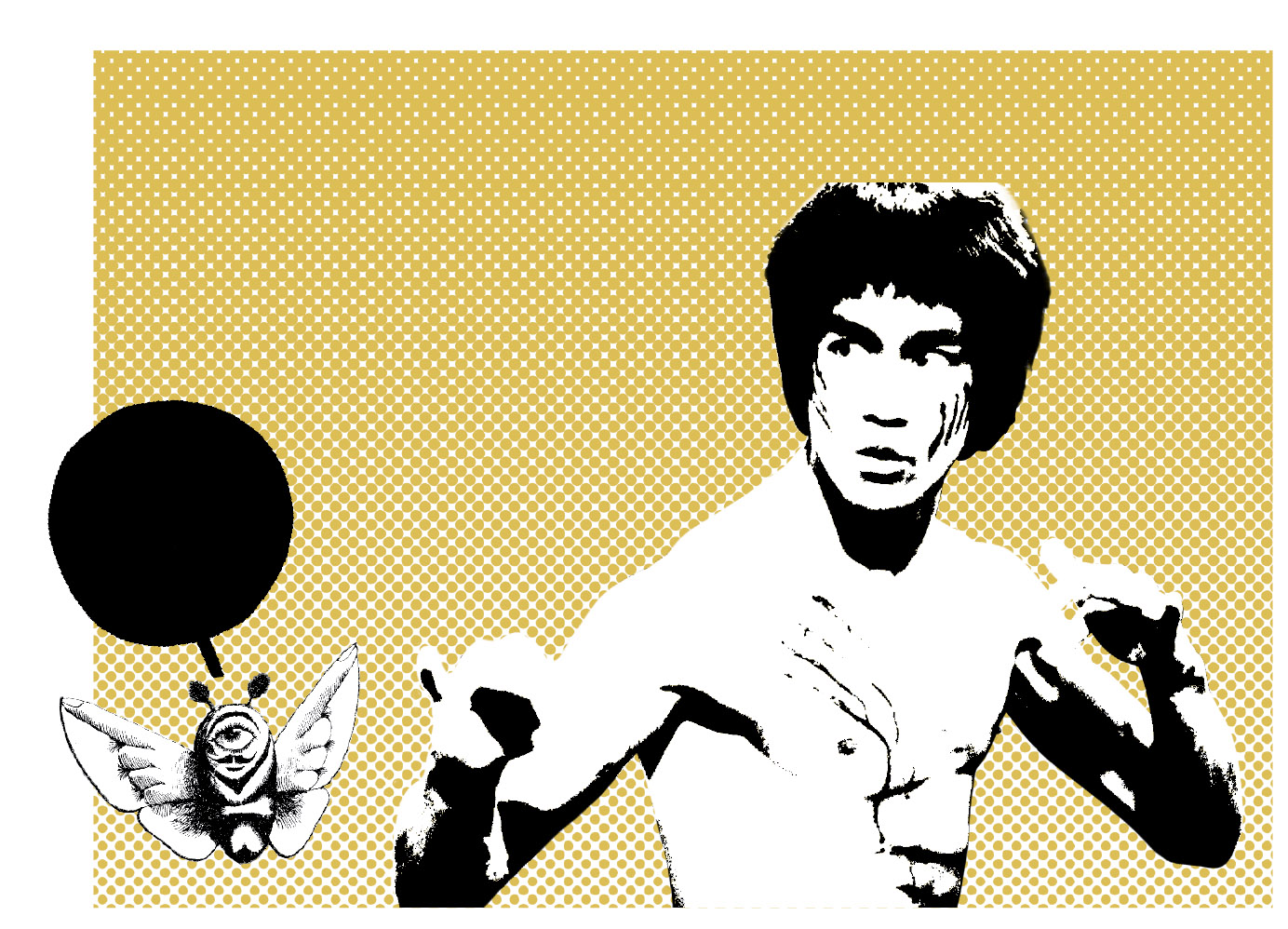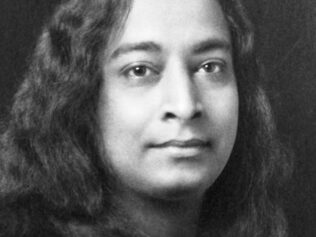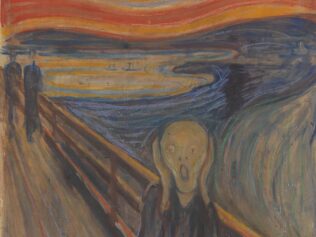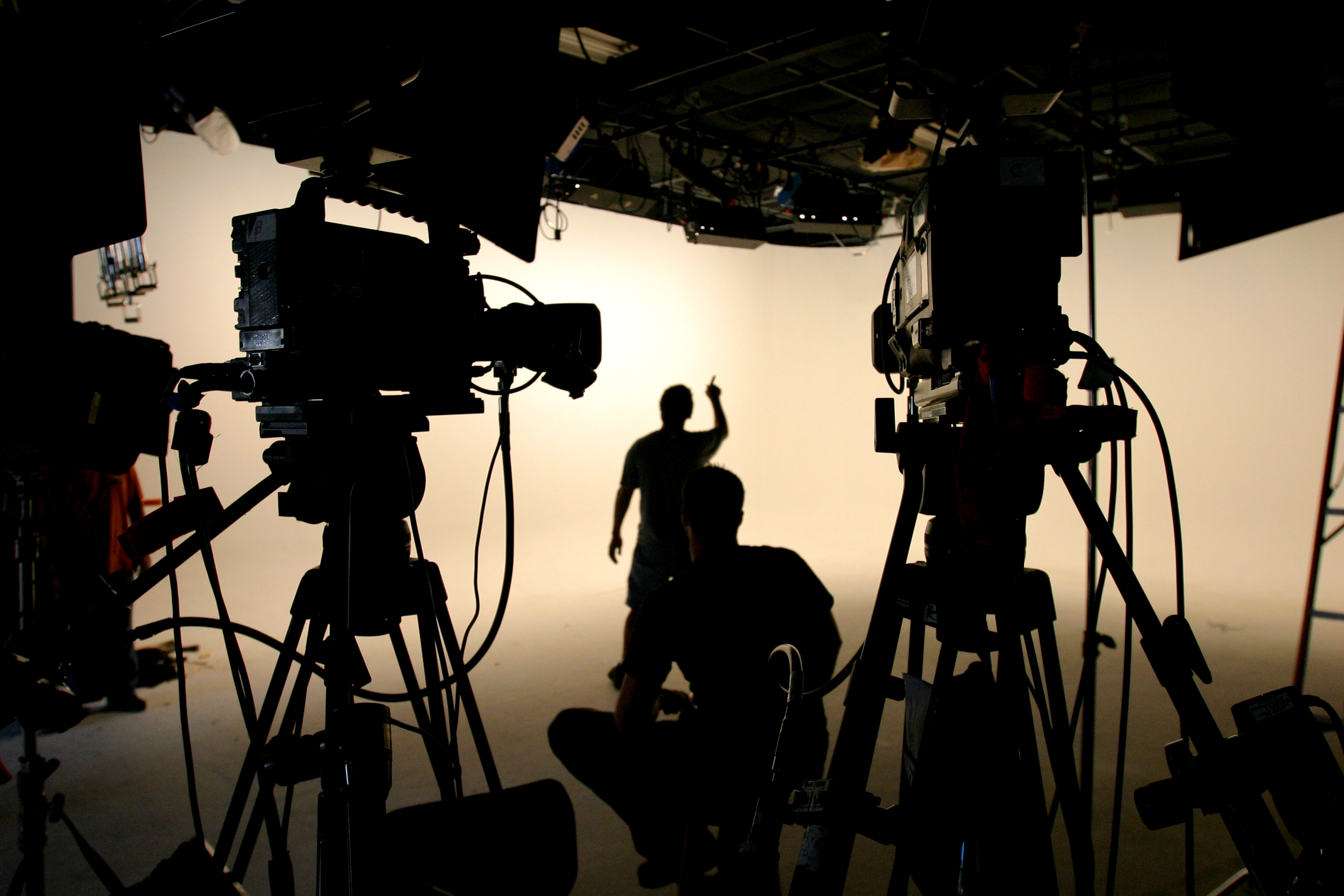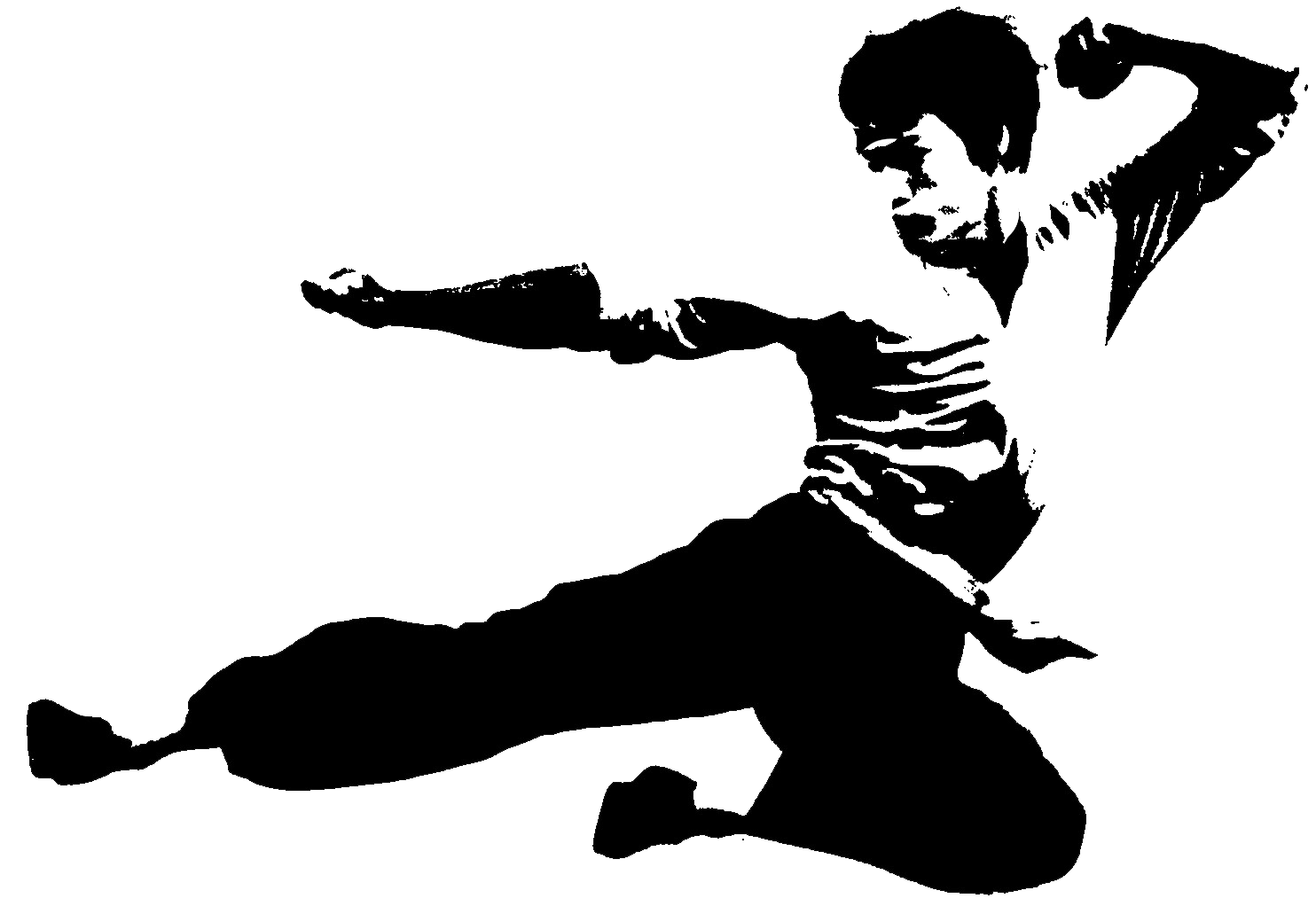
He showed the path for those who believed they could change their fate; a symbol of how underdogs and outcasts could triumph over the world’s wealthy. He was a highly paid actor and celebrity, a walking (or rather, leaping) picture of ambition, a successful Chinese embodiment of the American dream. He was Bruce Lee.
In 1974, the whole world was singing along to the Carl Douglas hit Everybody Was Kung Fu Fighting. It was number one in the charts in 15 countries, and everybody really was obsessed with kung fu fighting. That same year, Hanna-Barbera released the cartoon Hong Kong Phooey – even the younger viewers could join in the craze that swept America following Enter The Dragon’s premiere and Bruce Lee’s mysterious death. Hollywood started churning out one ‘karate movie’ (as we used to call them) after another. However, the fashion took a while longer to break through the Iron Curtain. As a result, it took until 1983 for Piotr Fronczewski (as Franek Kimono) to declare: “Your tears soak into my shirt that says King Bruce Lee Karate Master”, because Enter The Dragon had first hit Polish screens just one year earlier.
Over four decades after his death, Bruce Lee is still a multi-dimensional legend. For some, he is the greatest fighter of all time. The internet is full of serious analyses based on original VHS recordings, in which experts debate whether ‘The Dragon’ would be able to beat contemporary MMA, boxing and other champions. Observing his superhuman speed, they conclude that nowadays he would be a professional MMA fighter, making millions in the ring.
To others, he was a brilliant actor and pop-culture icon, while many saw him as a philosopher with a mind as agile and flexible as his body.
After Lee’s death, one of his students, John Little from Canada, gained access to the master’s library. There he found over 1700 books on a wide range of topics, from Taoism and Western philosophy, through martial arts, to physics and mechanics textbooks. Most of them contained notes in the margins, which were later compiled into seven volumes and published as Bruce Lee’s writings.
His favourite thinker was Alan Watts, who popularized Eastern philosophy in the West. Watts strove to amalgamate contemporary Christian mysticism with Asian philosophy. He was a Buddhist, but also received an honorary doctorate in theology from the University of Vermont. He experimented with LSD, living with his third wife in Druid Heights, a new-age hippy community on the outskirts of San Francisco. Another of Lee’s great influences was the Hindu theosophist Jiddu Krishnamurti, according to whom the road to freedom and happiness lay in complete rejection of any kind of idealism.
Traces of these teachings can be observed in the fighting style invented by Bruce Lee, which rejected traditional approaches to kung fu, as well as dogmas and rituals, in which bows and somersaults were performed purely for effect.
He proposed simplicity, not just in martial arts: “Hack away at the unessential” like “a sculptor [who] keeps chiselling away at the inessentials until the [statue] is revealed [without obstructions].”
During one of the first scenes of Enter The Dragon, the hero played by Lee talks with a wise old teacher who, after praising his progress, asks: “What is the highest technique you hope to achieve?” Bruce Lee replies: “To have no technique.”
The most famous teaching and motto of ‘The Dragon’ was: “Empty your mind, be formless, shapeless, like water. You put water into a cup, it becomes the cup; you put water into a bottle, it becomes the bottle […] Now water can flow, or it can crash. Be water, my friend.”
Water flows around any obstacle it encounters. In Enter The Dragon, there is a scene where competitors are taking a boat to an island where a secret martial arts tournament is to be held. One of the passengers starts picking fights with everyone and attacking the crew. Finally, he approaches the character Lee (played, unsurprisingly, by Bruce Lee), who ignores him and carries on staring impassively at the sea. “What’s your style?”, barks the troublemaker. Bruce (i.e. Lee) looks at him and replies: “Fighting without fighting.” This roughneck who has been pestering everyone obviously wishes to fight him there and then, so Lee glances around the deck and, pointing to a lifeboat, says: “Don’t you think we need more room? [On] that island. We can take this boat.” Lee lets his rival go ahead and, once he is in the lifeboat, loosens its mooring rope to let it drift away from the side, earning cheers from the crew.
A crane fighting a fox
Bruce Lee was born in San Francisco in 1940, in both the Chinese year and the hour of the Dragon. His real name was Lee Jun-fan, but his parents also needed to give him an American name, and the nurse suggested Bruce. His father Lee Hoi-chuen, a Cantonese opera actor, was on a tour of the States at the time. However, the family returned to Hong Kong when Bruce was four months old. Thanks to his father’s contacts, he became a child star, making his screen debut as a three-month-old baby and appearing in over 20 films before he turned 18.
He started to learn martial arts at the age of 12, after being beaten up several times at school and in the streets. His first (and, as it turned out, only) teacher was Ip Man, a Chinese national who had escaped to Hong Kong in 1950 when the Communists took power. He was a master of the Wing Chun style, teaching young Bruce the Wushu variant in particular (a collective term for over one hundred fighting styles – instead of ‘wushu’, Western culture has wrongly taken to using ‘kung fu’, which in Chinese means excellence in any field).
Wing Chun means ‘eternal spring’, but is actually derived from a student’s name. According to legend, this style appeared during the late 17th or early 18th centuries, when a group of monks at a Shaolin monastery were working on techniques designed to be effective in close combat. Before completing their task, however, the monastery was attacked and set ablaze by the Qing Manchu. The legend says that there were only five survivors, including the Abbess Ng Mui. She perfected a new style of her own, supposedly inspired by a fight between a crane and a fox. She passed on its rules to her secular student, the beautiful Yim Wing Chun – a tofu-seller whose charms attracted many men, from whom she needed to defend herself.
When Bruce commenced his training, Ip Man was already rather old, ill and hooked on opium, so Bruce was taught by one of his older students, Wong Shun Leung, while the master apparently limited himself to occasional remarks. In 1950s Hong Kong, the line between street gangs and martial arts schools was very fine indeed, and once the teenager Bruce crossed it (or came perilously close), his parents packed him off to the States.
Ip Man and masters from other schools (of which there were many in post-war Hong Kong) would teach their students not to trust theories, but to go out into the streets and see for themselves what they had learned. In other words: to seek opportunities to fight. So, groups of young people started to hang around on the streets, looking for fights. Terrified residents were always calling the police to break up brawls and arrest the rashest offenders. Still thirsting for action, the kids began to move up onto the rooftops, which resulted in Hong Kong’s unique roof-fighting culture.
Bruce was not a model student. At first, he attended the prestigious LaSalle School, but was expelled (for fighting) and ended up at St. Francis Xavier’s College, where most of his classes were in English. He was a great cha-cha dancer, and won a boxing tournament by knocking out a triple champion in the final. Students remembered him as an arrogant show-off who was always picking fights, but was still very likeable. Even back then, he was incredibly strong, rapid, and quick to learn. His sister recalled that, if ever he was beaten, he would train even harder. He became a local celebrity – the master of the rooftops.
Kids practising the Choy Li Fut style all dreamed of single combat with 18-year-old Bruce, the best exponent of Wing Chun. A two-round fight was arranged and Bruce was punched hard in the face several times during round one. Knowing he couldn’t hide the battle scars from his father (to whom he had solemnly sworn many times never to get into fights), he asked his friends to let him skip the second round. They convinced him that the honour of their school and their master rested on his shoulders, so he knocked his rival out in round two.
At this point in the story, various versions and legends arise again. One of them states that the beaten rival was a famous local gangster’s son, and life became dangerous for Bruce in Hong Kong. Another says that the beaten rival’s parents told the police and, since young Lee was already well-known to them and on the list of juvenile delinquents, they decided to arrest him. Only a bribe paid by his father kept him from ending up behind bars.
Either way, in autumn 1959, 18-year-old Bruce found himself on a steamer sailing to San Francisco. He did not settle in the city of his birth, however, but moved 1300 kilometres north, to Seattle. There he lived at the back of a Chinese restaurant run by one of his parents’ friends, and began to study at the University of Washington, earning extra money in the afternoons by helping out at the restaurant. Legend has it that he studied philosophy but, according to university records, he chose acting. Before he had left Hong Kong, he confided to a friend that he would try to make his living teaching Wing Chun.
A monk in the Wild West
The US West Coast martial arts scene of the early 1960s was completely different to what Bruce had left behind at home. Street-fighting was out of the question – not to mention roof-fighting – and bowing and baroque rituals reigned supreme. One had to obey the master’s commands to the letter, performing specific exercises in a specific order, preceded by specific rituals. American kung fu was a dead art-form, not a living organism.
The heyday and popularity of martial arts came in the early 20th century, when Imperial China was replaced by the Republic of China, and everything ’Chinese’ and ’traditional’ helped unite this new state threatened by Japanese invasion. The authorities encouraged Wushu masters to give free lessons, start up travelling schools, distribute free textbooks and organize demonstrations. When the Communists took over 40 years later, most teachers of traditional martial arts were forced to flee the country, mainly finding refuge in Hong Kong and Taiwan, but also on the US West Coast. By 1950, over 117,000 Chinese had moved to America, and that number doubled in under a decade. Today, there are almost five million of them living in the US, mostly in San Francisco, where they make up 21% of the population.
On arrival in America, Bruce could not fit in with the ossified martial arts community. Chinese emigrants to the US upheld the tradition whereby boxers would turn against missionaries and foreigners and ban them from learning Wushu, so most schools refused to take whites. Bruce immediately began to dispute and reject this attitude. His school had no racial barriers and would train any volunteers, refusing only those who were incapable of devoting themselves to Wing Chun. In Seattle, his first student was Jesse Glover, an Afro-American. Incidentally, Bruce had a drop of European blood, as his mother was half-English (although for years she claimed to be of German origin). Legend has it that this led to problems for young Bruce – not all the instructors at Ip Man’s school were willing to teach him.
Many years later, in a television interview, he was asked whether he thought of himself as Chinese or North American. He replied that he thought of himself as a human being. Today, there is a tendency to portray Bruce Lee as a fighter for freedom and tolerance. As is often the case with legends, although exaggeration does creep into the narrative, it must be said that Bruce was sensitive to racism and fell victim to it on many occasions.
At the start of his Hollywood career, for example, he turned up at Warner Bros. studios with a completed script for a martial arts television series, The Warrior. It was the story of a lone Shaolin monk crossing the American Wild West. The project was approved, but Bruce Lee didn’t get to play the lead role. The producers felt that a Chinese main character wouldn’t work, as audiences wouldn’t be able to identify with him. The series was made eventually (titled Kung Fu), but the part went to David Carradine.
This story – that Bruce Lee came up with a series about a monk in the Wild West and Warner Bros. stole his idea – could easily be dismissed as another of the legends surrounding ‘The Dragon’, were it not for hard evidence: a recorded television interview in which Bruce said he was working on a screenplay, but that both the studios he approached (Warner and Paramount) had reservations about his skin colour, so the series would probably not get made.
A crude, fierce fight
Before Bruce Lee got to Hollywood, he first had to fight his most famous and myth-shrouded battle.
One of his female students from Seattle, Linda Emery, later became his wife and the mother of two children: his daughter Shannon and son Brandon. For many years, Linda did not dare tell her parents that her boyfriend was Chinese.
Bruce met James Yimm Lee during tournaments and demonstrations. They had a 20-year age gap. James was born and raised in the States, and served in the US Army during World War II. The two shared similar views on martial arts, and their acquaintance grew into a friendship. Bruce and Linda moved in with James and his wife in Oakland, and opened a martial arts school in his garage.
Bruce Lee and James Lee felt that what was being learnt and taught made no sense in actual combat. Traditional kung fu had become art for art’s sake. Its system of bowing, acrobatics and somersaults was visually impressive, but ineffective. Bruce called it ‘dry-land swimming’ or a ‘classical mess’. Together, the pair travelled to tournaments and demonstrations, where Bruce would publicly ridicule individual styles and demonstrate why students of each school stood no chance in a street-fight.
During one such lecture in 1964, he was asked to leave. A few weeks later, at the Sun Sing Theatre in San Francisco’s Chinatown, Bruce taunted the district’s masters, saying: “These old tigers have no teeth”, and was again asked to leave. During another demonstration, he was alleged to have claimed that he would beat any challenger in the city and the area.
He who sows the wind reaps the whirlwind. Sooner or later, someone had to challenge Bruce to a fight, and he was well aware of it. The same thing had happened several years earlier, back in Seattle, when his provocation and disrespect for tradition displeased Yoichi Nakachi, a Japanese karate master who had been living in the States for years. Bruce fractured the man’s skull, ending the fight in the 11th second.
This time, in late autumn 1964, Lee was challenged by Wong Jack Man, who had recently arrived in San Francisco from China. In Chinatown, the newcomer had quickly earned a reputation as a talented street-fighter and was said to be extremely strong, with elegant moves. He was the first in the area to fight in the Northern Shaolin style. He represented everything that Wing Chun lacked (especially Bruce Lee’s interpretation) – his style was highly ornamental and intended for fighting at a distance. Wong Jack Man adored rituals as much as Bruce despised them, or so the legend goes.
But the legend offers no unambiguous answer as to why exactly Wong Jack Man challenged ‘The Dragon’ to a fight. He was new in town and had never met Bruce in person or witnessed his bragging and mockery of traditional styles. The first theory has it that Wong Jack Man wished to open a martial arts school of his own and needed to gain prominence in the community. Another states that he was pushed into the fight exactly because he was new and had no idea who he was up against. Years later, he admitted to greatly regretting that fight. Not surprisingly, as it still plagues him to this day.
Along with Wong Jack Man, five people drove to Oakland in a brown Pontiac Tempest: David Chin and Chan ‘Bald Head’ Keung, students of a tai chi school in San Francisco’s Chinatown, plus three local hooligans unconnected to the martial arts scene: Ronald ‘Ya Ya’ Wu, Martin Wong and Raymond Fong, who were simply hoping for a brawl
Waiting for them in Oakland were Bruce Lee and his new wife, Linda, who was eight months pregnant, and whose account of the fight is the most famous, but also the farthest from the truth. In her book, Linda wrote that Wong Jack Man had been sent to stop Bruce teaching white people kung fu, which was obviously rubbish. One of Bruce’s closest associates, Al Novak, told of how he had trained martial arts in San Francisco’s Chinatown back in the early 1960s and never faced such problems. Last on the roster was James Lee (with a loaded pistol, in case things got out of hand). The two groups totalled total of nine people, of whom three are still alive: Wong Jack Man, Linda Lee and David Chin.
It was a crude, fierce fight; far-removed from the painstakingly staged movie scenes. Bruce landed his first punch on his rival’s temple, but was unable to end the fight as quickly as he had in Seattle a few years earlier, and soon found himself facing a hail of blows. He parried and countered, then Wong tripped over a step. Bruce showered the back of his head in punches, screaming at him in Chinese to give up. According to David Chin’s report, it all lasted for no longer than seven minutes.
Like every good playground punch-up after school, this one quickly began to escalate and soon assumed gigantic proportions. According to one version, Bruce smashed Wong’s head through a wall. Another says that Wong Jack Man already had Bruce Lee in the corner, and was about to finish him off, when the police entered the garage. Years later, when Bruce Lee had become the Bruce Lee, Wong Jack Man finally spoke up, insisting that the fight had been very evenly matched and had lasted for well over 20 minutes. This version does not hold water, however, as street-fights are rapid bouts, not multi-round matches, and none of the other eyewitnesses confirmed it.
Bruce Lee won, but was very disappointed with how the fight had gone. He felt that the style in which he had beaten Wong Jack Man failed to justify his previous criticism of traditional kung fu. His messy victory had depended on chance and was utterly unlike his previous triumph in Seattle. That came as something of a cold shower.
Scientific street-fighting
Therefore, Lee felt he needed to devise an entirely new fighting style to guarantee the maximum effect in street-fights. A small group had already formed around him and James, including Ed Parker, Wally Jay, Ralph Castro, and the aforementioned Al Novak. They would train together in the mornings and talk in the evenings.
Only after the fight with Wong Jack Man did Bruce Lee begin to seriously formulate the rules of Jeet Kune Do (JKD). ‘Jeet’ means ‘to intercept’, ‘Kune’ is ‘the fist’, and ‘Do’ is ‘the way’. So, Jeet Kune Do can be translated to mean ‘Way of the Intercepting Fist’. It combined Wing Chun with boxing, Filipino martial arts and kick-boxing, with legwork and tactics borrowed from fencing. Just like in fencing, the most effective blows are delivered just as one’s rival attacks, for that is when their guard is down. Hence, the ‘intercepting fist’. Today, Bruce Lee is regarded as the father of MMA, since he was the first to combine a variety of fighting styles. While developing JKD, he also began to study the kinetics and mechanics of the human body. He described his own style as “scientific street-fighting”.
Bruce Lee would work on JKD for the rest of his life, even after becoming a film star. In 1971, in an interview for the legendary Black Belt magazine, he said: “I have not invented a new [fighting] style. […] On the contrary, I hope to free my comrades from bondage to styles, patterns and doctrines. Jeet Kune Do is not an organized institution that one can be a member of,” said Lee, adding: “My movements are simple, direct and non-classical. The extraordinary part of [my style] lies in its simplicity. In Jeet Kune Do […] there is nothing artificial. I always believe that the easy way is the right way.”
Jeet Kune Do soon fascinated Hollywood. Bruce was invited to France to teach Roman Polański the basics. Among the students of JKD was James Coburn, the star of cult westerns The Magnificent Seven and A Fistful of Dynamite. Another of Lee’s students was Kareem Abdul-Jabbar, a prominent basketball player for the Los Angeles Lakers, whom Lee also cast in one of his films. It was Steve McQueen, however, who made a name for Bruce. He was a major star of the late 1960s and early 1970s, often described as an anti-hero or ‘hero of cool’. He never used doubles and did all his own stunts – flying planes and racing cars. The chase scene from Bullitt, in which he drives an olive-green Ford Mustang, went down in cinema history. Steve McQueen was also one of the pall-bearers at Bruce’s funeral.
Kato versus Robin
For all this to happen, however, Bruce Lee had to make it to Hollywood first. That became possible thanks to a member of his group of reformists from Oakland: Ed Parker, a grandmaster and the creator of Kenpo karate. Parker was a good businessman who could handle publicity, and one of his students was Elvis Presley. He organized a karate tournament in Long Beach in 1964, and Bruce Lee gave a demonstration. This tournament attracted the cream of Hollywood and it was where Lee first demonstrated his one-inch punch (delivered from an inch away) – as devastating as a normal blow from a powerful swing. Decades later, the popular science television programme Mythbusters confirmed that it was indeed possible, and in Quentin Tarantino’s Kill Bill, the Bride manages to escape the coffin in which she has been buried alive by shattering its lid with such punches.
One member of the audience was greatly impressed by Bruce’s demonstration: Jay Sebring, a personal hairdresser to the stars, who was murdered several years later by members of the Charles Manson gang at Sharon Tate’s residence. He told television producer William Dozier about Lee while giving him a haircut, and Dozier invited him in for a screen test.
Bruce soon landed a role in a television series adapted from The Green Hornet comics, and the first episode aired on 9th September 1966. Bruce played Kato, the hero’s assistant and a master of Oriental martial arts, shown on television for the very first time. In one episode, the Green Hornet fought against another serial hero from the same studio, Batman. The fight ended in a draw, as did a clash between their sidekicks, Kato and Robin.
Lee also played bit parts in other series, but was unable to make his cinematic debut. He was already well-established in Hollywood, however, training actors and others in the community. His first silver-screen appearance was in the film Marlowe. The eponymous hero, created by writer Raymond Chandler, is an alcoholic detective who drinks “coffee as black and bitter as remorse”. Bruce Lee played a villain who enters Marlowe’s office and reduces it to rubble with his bare hands.
He mostly played supporting roles and bit parts, and was hired to choreograph movie fight scenes, but his big break was yet to come: Enter The Dragon.
In 1969, aged 29, Bruce Lee wrote himself a letter: “I, Bruce Lee, will be the first highest paid Oriental super star in the United States. In return, I will give the most exciting performances and render the best of quality in the capacity of an actor. Starting 1970 I will achieve world fame and from then onward till the end of 1980 I will have in my possession $10,000,000. I will live the way I please and achieve inner harmony and happiness.”
The idea to write this letter didn’t just spring out of nowhere. He had read about it in the book Think and Grow Rich by one of his favourite authors, Napoleon Hill, creator of the ‘personal-success literature’ genre. Hill proposed a simple formula. Fix in your mind the exact sum of money you desire (saying ‘plenty’ is not sufficient), determine exactly what you intend to give in return, establish a definite date, create a definite plan and begin at once, write it down in a notebook and read it aloud, twice daily – once just before bed, and once after waking.
Four years after writing his letter, Bruce Lee was dead, although he had already managed to achieve everything he had listed… with a vengeance.
Game of Death
In 1969, he went to Hong Kong. Upon arrival, he found himself unable to go anywhere without being hounded by journalists or fans demanding autographs. In his homeland, this lesser-known Hollywood actor had become an A-list celebrity, thanks to his part as Kato in The Green Hornet, which had been dubbed into Chinese as The Kato Show and was shown constantly on television. He was so popular that even the films he had acted in as a child were screened regularly.
He was also showered with contracts, not only for leading roles, but also as a fight choreographer, director and scriptwriter. His first major role was in The Big Boss, which premiered in Hong Kong in 1971. This film laid the foundations for a new cinematic genre: the kung fu movie. It immediately became a colossal hit and was the highest-grossing film in the history of Hong Kong cinema.
That record was beaten the following year, however, with the release of Bruce’s second film, Fist of Fury. A few months later, Lee made his directorial and scriptwriting debut with The Way of the Dragon. In the film’s final scene at the Roman Coliseum, he beats karate master Colt, sent by the Italian mafia. As Colt, Lee cast his own student and neighbour from Los Angeles: the US karate champion Chuck Norris, for whom the role was a springboard to stardom.
Hollywood’s doors now stood open for Bruce Lee to play the lead in the first American kung fu movie, Enter The Dragon (still his best-known film). Even nowadays, after watching it, kids the world over run around the streets, karate-chopping the air and shrieking weird sounds: “Aaa‑djaaa!!!” In 2004, Enter The Dragon was included among the films showcasing the range and diversity of American film heritage, stored at the Library of Congress.
Of course, we will never know whether the film would have been such a hit or whether Hollywood would have gone martial-arts crazy if Bruce Lee hadn’t been found dead in the flat of actress Betty Ting, his presumed lover, six days before its Hong Kong premiere on 20th July 1973.
In 1985, Ting withdrew from public life to become a Buddhist monk. Previously, her description of Bruce’s death had always tallied with the official version. They had been looking through the screenplay for their next film, Game of Death, when he felt unwell and went to take a nap. Ting gave him Equagesic – a combination of aspirin and a tranquilliser. Bruce and his associate/business partner, the producer Raymond Chow, had arranged to have dinner that evening to discuss a role in Game of Death with the worst James Bond in history, Australian bodybuilder George Lazenby. When Bruce failed to show up for the meeting, Raymond went round to Betty’s flat, but they were unable to wake him. Bruce was taken to hospital, where he was declared dead. He was 32 years old.
The direct cause of his death was cerebral oedema. Formally, it was an allergic reaction to the drug, but obviously few people accepted this explanation. A man made out of pure muscle who was fanatical about his healthy diet (one of Hollywood’s first in the late 1960s and early 1970s) simply couldn’t have died of something so trivial.
There were rumours he had been poisoned. Initial attempts to cover up the fact that he was found dead at Betty Ting’s flat didn’t help either, and journalists soon uncovered the truth. They immediately wrote sensational articles accusing Betty of poisoning ‘The Dragon’. There was also speculation as to whether she had been Bruce’s only lover. They mentioned Nora Miao, who had been in all of his films produced in Hong Kong. Gossip that she had been more than just his co-star was fuelled by the fact that Bruce hugged and kissed her in Fist of Fury – the only kiss in any film involving ‘The Dragon’.
In his work, Bruce also delved into the theory of love, writing: “The happiness that is derived from excitement is like a brilliant fire – soon it will go out.” Perhaps that is why Linda Lee still refuses to believe that ‘The Dragon’ had lovers, as though she hadn’t read another quote from her husband: “Mistakes are always forgivable, if one has the courage to admit them.”
Another theory regarding the master’s mysterious death holds that Bruce Lee was killed by the Chinese mafia for betraying the arcana of kung fu to the whites. Yet another suggests that he died of dim mak, the secret blow of the vibrating palm, otherwise known as ‘the touch of death’. There is no scientific evidence of its existence, but every young student knows that the greatest masters possess the secret. It is enough to touch your rival in several spots (or sometimes even one) in the right order to cause cerebral oedema, stop their heart or make it explode – often long after the secret blow has been dealt. In 1985, Black Belt magazine ran a serious article about dim mak, which hinted that it may have been what killed ‘The Dragon’.
There is also mention of a curse hanging over Bruce Lee’s family. He was supposedly damned from the moment he was born, when his mother asked that he be given a girl’s name at the hospital to ward off the evil spirits, as they were more interested in little boys than little girls. The curse theory regained momentum in 1993 when Bruce’s son, Brandon, quite a good fighter and actor, was shot and killed in unfortunate circumstances during the filming of The Crow (his first starring role). He was 28 years old and, like Enter The Dragon, The Crow became an instant cult movie.
This year is the 46th anniversary of Bruce Lee’s death. He is still a legend and four generations have been brought up on his films. Directly after his mysterious death, Hollywood and Hong Kong began to mass-produce new films. Not only were their actors the spitting image of Bruce, but they often adopted pseudonyms such as Bruce Li (Ho Chung Tao from Taiwan), Bruce Le (Wong Kin Lung from Burma) and Dragon Lee (Moon Kyoung-seok from North Korea). This phenomenon has gone down in history as ‘Bruceploitation’.
Also riding on the wave of the kung fu craze were songs, comics, and eventually video and computer games. The best fighter in the cult Street Fighter series was Fei Long, who looked incredibly similar to Bruce Lee. The script of another cult game, Mortal Kombat, was just a re-run of Enter The Dragon.
Afro-Americans were particularly fond of Bruce Lee. His films were almost always constructed according to the same format. A kung fu warrior confronts a rich white man, drug baron, or lunatic wishing to take over the world – and wins. James Schamus, the scriptwriter and producer of Crouching Tiger, Hidden Dragon, even said that Bruce Lee was the biggest Afro-American film star of the seventies. Kung fu and Lee strongly influenced black culture. Break-dance pioneer Crazy Legs of the legendary Rock Steady Crew admitted that, when coming up with new moves, he was inspired by kung fu movies and the acrobatics the fighters performed. Dialogues from Bruce Lee’s films (“Be water” or “It is like a finger pointing away to the moon. Don’t concentrate on the finger or you will miss all that heavenly glory!”) were sampled between tracks on albums by members of the legendary hip-hop collective Wu-Tang Clan, whose entire image heavily references kung fu culture.
Bruce Lee’s teachings were certainly closer to New Age than classical philosophy. ‘The Dragon’ probably came nearest to the latter when mentioned by Slavoj Žižek in the afterword to Jacques Rancière’s The Politics of Aesthetics. Žižek wrote that Bruce’s popularity in the 1970s was an example of “a genuine working-class ideology”. He argued that Lee and kung fu movies had shown the young and destitute that they could still achieve something, even if all they possessed was their bodies and self-discipline.
However, according to Žižek, the ideological status of martial arts grew more complicated over time, transforming into almost an obsession with the self, the body and the trend for ‘personal growth’. Žižek thus placed kung fu alongside yoga, feng shui, tai chi, qigong and acupuncture on the list of Oriental practices warped by Western consumerism and individualism.
Still, the adoration Bruce Lee received not only from Afro-Americans, but from all the weak, the despised and the exploited, extends well beyond the Slovenian Marxist’s analysis. In Saturday Night Fever, the hero, Tony Manero, played by a young John Travolta, stands in front of a mirror, getting ready to hit the discotheque. By day, he leads a dull life as an untalented clerk in a chemical store. Bare-chested, to the sound of Bee Gees hits, he prepares to go out. Next to the mirror hangs a Bruce Lee poster. Manero looks at his idol, imitating his pose in the mirror, then puts on a tight-fitting pink suit and sets off for the disco. Only there, once a week, on Saturday night, can he become someone better, a superhero: Bruce Lee.
Translated by Mark Bence

